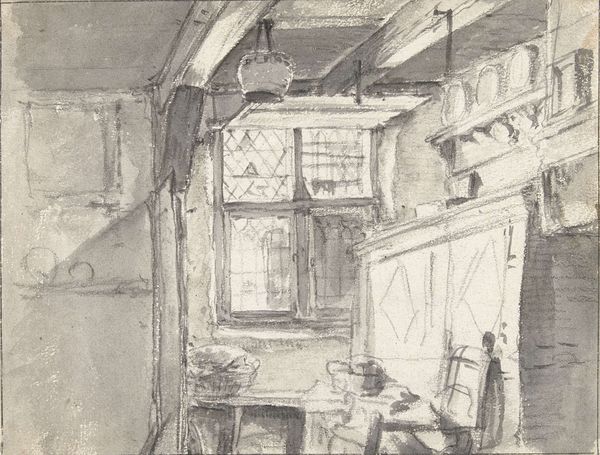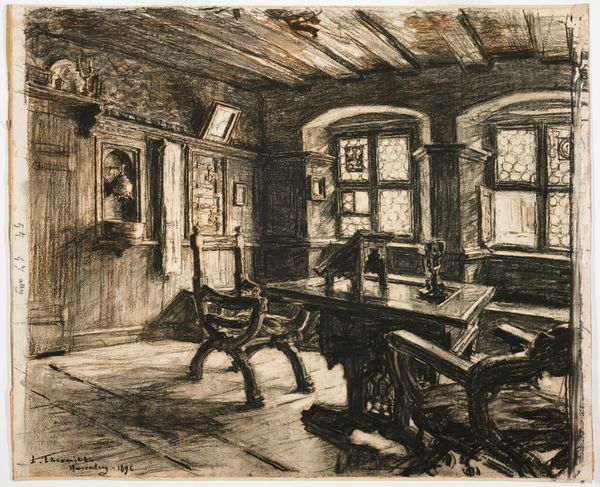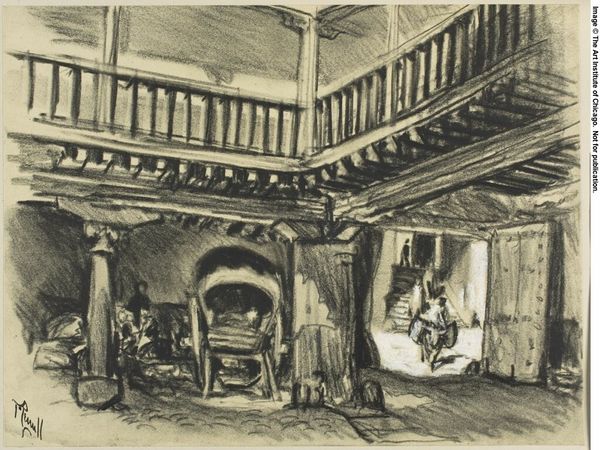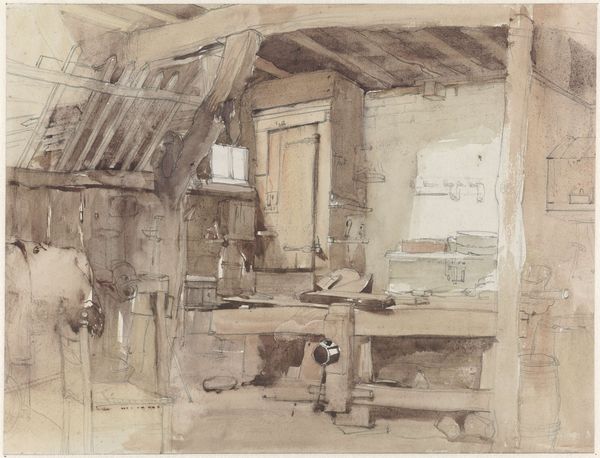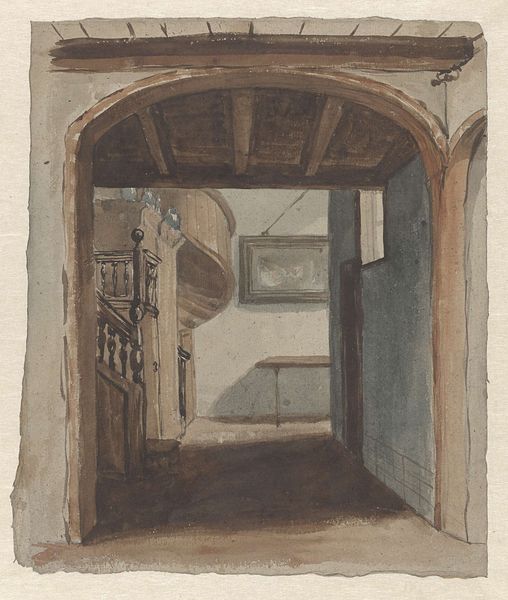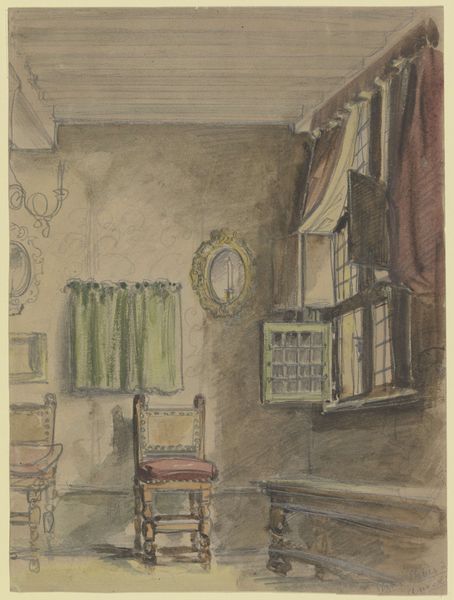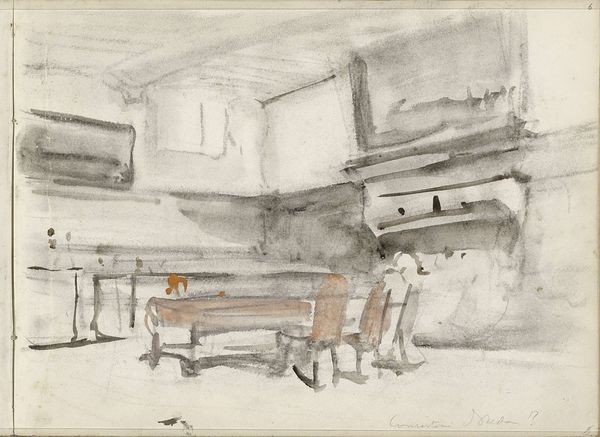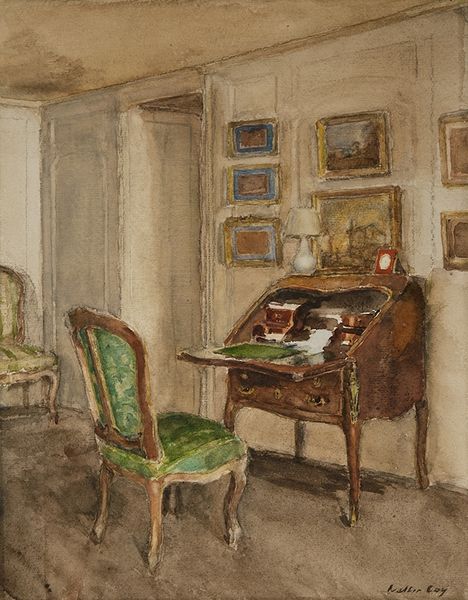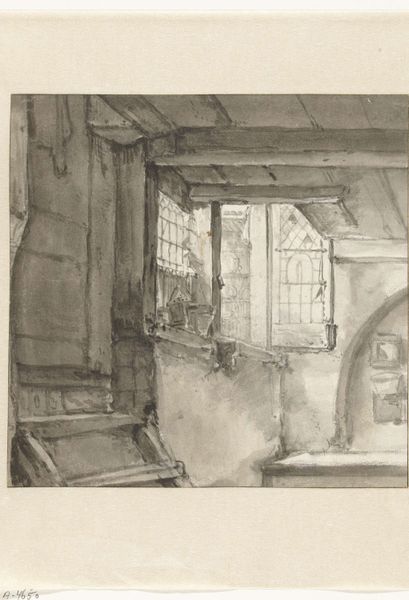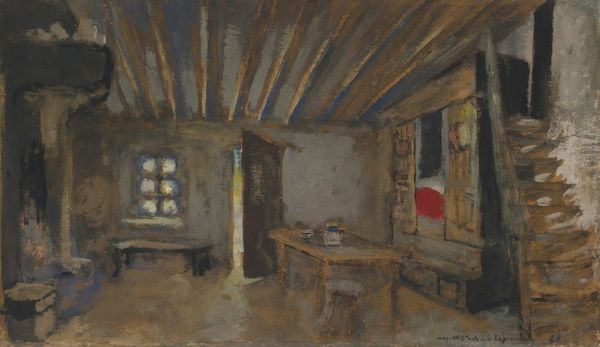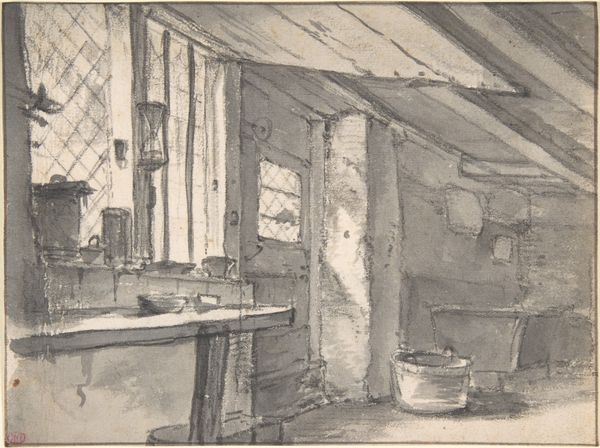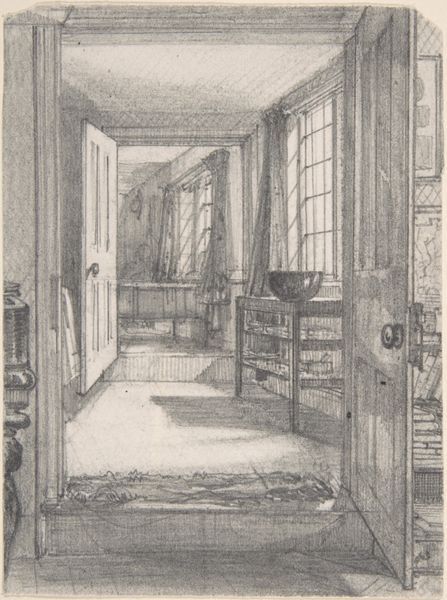
drawing, watercolor, ink
#
drawing
#
charcoal drawing
#
watercolor
#
ink
#
genre-painting
#
watercolor
Copyright: Public Domain: Artvee
Curator: Here we have a fascinating piece listed as Study for ‘Washington’s Headquarters at Newburgh, New York’ in ink, watercolor and charcoal by Edwin Austin Abbey. Editor: It has such an airy, tranquil atmosphere for an interior scene, almost monastic in its simplicity and spareness. The browns and grays create this beautiful monochromatic feel. Curator: Absolutely. I'm drawn to what the iconography of such a space might represent. Headquarters can serve as powerful symbols, acting as a locus of decision-making and strategy—crucial intersections where power is centralized and futures are determined. Even in this preliminary study, one senses the weighty responsibility such spaces carry, particularly given Washington’s role in shaping early American history. Editor: I completely agree, and I think its important that we discuss that Abbey's rendering, particularly in his studies, brings forth important notions on class, gender and identity. Consider the history embedded in those walls; who had access to the Headquarters, whose stories are absent from that space and its symbolic power? Curator: A vital point to make about absent presences! Thinking about the symbolism of absence leads me to the objects themselves. Take that simple window, which represents a glimpse to what the characters aspire. Windows like these were often meant to point the audience’s attention not towards to who lives inside these spaces, but instead, the people excluded from power structures. Editor: I agree. Moreover, if you want to explore ideas around nationalism, looking into visual history might make those points evident. How might Abbey's painting perpetuate mythologizing national history while eliding over other historical accounts or creating further inequalities. The power dynamic that plays with exclusion as a recurring motif can certainly speak volumes. Curator: I concur that this preliminary work touches on critical points on memory and place, thus enriching this composition for those who take the time to pause and look closer. Editor: Absolutely, an amazing artwork can have complex conversations about gender, class, and national identity and invite an intersectional examination for audiences seeking that connection with a visual history.
Comments
No comments
Be the first to comment and join the conversation on the ultimate creative platform.
